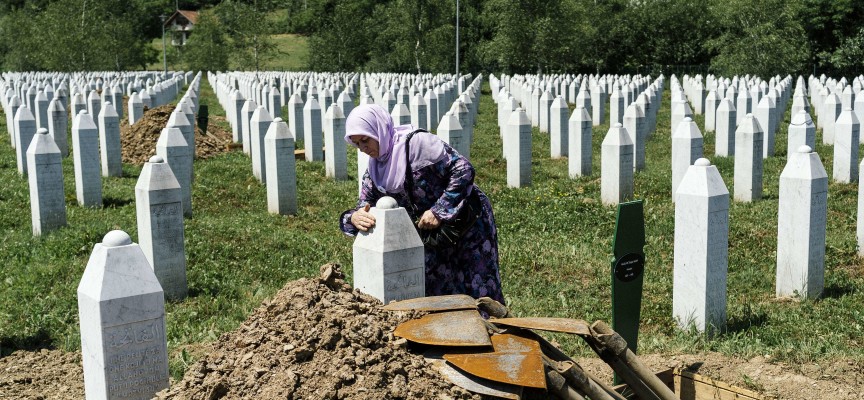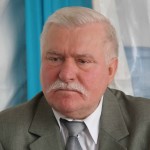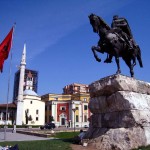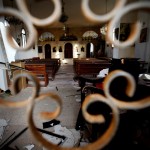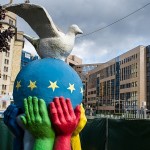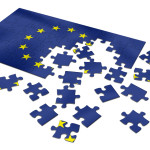The recent commemorations of the 20th anniversary of the Srebrenica genocide have shown once again how the Balkans represent a raw nerve in the European collective consciousness. It was not hard to imagine that the celebrations of 11th July would be accompanied by political tensions, but few would have imagined that the clash could involve even the United Nations Security Council. Three days before the international community met to remember the 8,372 victims of the massacre (all Muslims killed by the Serbian military and paramilitary troops of the Serbian Republic of Bosnia), Russia had vetoed a resolution proposed by the United Kingdom in which the events of Srebrenica were being referred to with the term “genocide”, believing this consciousness could be “a prerequisite for reconciliation”. A resolution that would have helped the Western governments to remove the embarrassment of the survey published a few days earlier by the British “The Observer” that, citing declassified secret documents, accused the governments of France, the US and Britain of not intervening in Srebrenica while knowing the risk for the population, in order not to interfere with the peace talks that, a few months later, would lead to the Dayton Agreements of November 1995. According to this reconstruction, going to the clash with the Serbian troops would have distanced the possibility of peace. But is this enough to justify the greatest tragedy performed on European soil in the last thirty years? We believe it really is not. Until today the only Western government that has paid off, at least morally, for what happened in Bosnia, has been the Dutch government, whose soldiers, embedded within a contingent of the United Nations, failed to stop the massacre, and actually they even ended up being partly accomplices, more or less aware, of the executioners, handing to the Serbian troops some of the people who they were called upon to defend.
In light of these facts, one wonders what role the EU is called to play today in the future of the Balkans. The fact that some young Bosnian Serbs, in the aftermath of the commemorations, together with a protest against the Serbian Prime Minister Aleksandar Vučić, have decided to react by hanging pictures of Russian President Vladimir Putin in the streets near Srebrenica, shows that the path of the Balkans to the Union has come to a critical point , and not just recently. After years in which Serbia seemed ready to follow the path of Croatia to Europe, the process seems to have stuck, partly because of the economic crisis and the problems within the EU (see the Greek case and the Ukrainian crisis). It is difficult to imagine in the short term a further enlargement of the Union and this has ended, inevitably, to give strength to leaders and nations like Putin’s Russia or Turkey’s Erdogan who look at the Balkans – the former especially to Serbia and Montenegro and the latter to Bosnia and Herzegovina, Kosovo and Albania – as economic and political partners. There was a time when people thought that the common path towards the European Union would be a catalyst strong enough to bring peace and, in the long run, the reconciliation between the peoples and governments of the Balkans. A little as it happened in Central Europe with the European Economic Community. So it was not, at least for now. Aided by a period of weakness and political vision of the European Union, this seems to have lost its attractiveness (more on governments than on the young), and this must inevitably lead us to think about what will be a new European strategy for the Balkans. Because Srebrenica is not only a terrible page of the European past, but is also a litmus paper of the present and a warning for what could be the future, in the Balkans and beyond.
Le recenti commemorazioni per il ventennale del genocidio di Srebrenica hanno dimostrato ancora una volta quanto i Balcani rappresentino un nervo scoperto nella coscienza collettiva europea. Non era difficile immaginare che le celebrazioni dell’11 luglio scorso sarebbero state accompagnate da tensioni politiche, ma pochi avrebbero immaginato che lo scontro sarebbe arrivato a coinvolgere persino il Consiglio di sicurezza delle Nazioni Unite. Tre giorni prima che la Comunità internazionale si ritrovasse per ricordare le 8.372 vittime della strage (tutti uomini musulmani uccisi dalle truppe militari e paramilitari serbe della Repubblica Serba di Bosnia), la Russia aveva posto il veto a una risoluzione proposta dal Regno Unito in cui ci si riferiva agli eventi di Srebrenica con il termine di “genocidio”, ritenendo questa presa di coscienza come “un prerequisito per la riconciliazione”. Una risoluzione che avrebbe aiutato le cancellerie occidentali a togliersi dall’imbarazzo per l’inchiesta pubblicata alcuni giorni prima dal britannico “The Observer” che, citando alcuni documenti segreti declassificati, accusava i governi di Francia, Usa e Gran Bretagna di non essere intervenuti a Srebrenica pur sapendo il rischio per la popolazione, per non interferire con i colloqui di pace che, pochi mesi dopo, avrebbero portato agli accordi di Dayton del novembre 1995. Andare allo scontro con le truppe serbe avrebbe, secondo questa ricostruzione, allontanato la possibilità della pace. Ma questo basta a giustificare la più grande tragedia compiuta sul suolo europeo negli ultimi trent’anni? Crediamo proprio di no. Ad oggi l’unico governo occidentale ad aver pagato, almeno moralmente, per quanto successo in Bosnia è stato quello olandese i cui soldati, inquadrati all’interno di un contingente delle Nazioni Unite, non riuscirono a fermare la strage, anzi in parte finirono per essere complici, più o meno consapevoli, dei carnefici consegnando alle truppe serbe alcune delle persone che erano chiamate a difendere.
Alla luce di questi fatti viene da chiedersi quale ruolo l’Unione europea è chiamata a giocare oggi nel futuro dei Balcani. Il fatto che alcuni giovani serbo-bosniaci, all’indomani delle commemorazioni, con annessa contestazione nei confronti del primo ministro serbo Aleksandar Vučić, abbiano deciso di reagire appendendo le foto del presidente russo Vladimir Putin per le strade vicino a Srebrenica, dimostra come il cammino dei Balcani verso l’Unione sia, non da oggi, arrivato a un punto critico. Dopo anni in cui la Serbia sembrava pronta a seguire la strada della Croazia verso l’Europa, anche a causa della crisi economica e dei problemi interni all’Ue (si vedano il caso greco e la crisi ucraina), il processo sembra essersi bloccato. È difficile ipotizzare nel breve periodo un ulteriore allargamento dell’Unione e questo ha finito, inevitabilmente, per ridare forza a Paesi e leader come la Russia di Putin o la Turchia di Erdogan che guardano ai Balcani – nel primo caso soprattutto a Serbia e Montenegro e nel secondo a Bosnia Herzegovina, Kosovo e Albania – come partner economici e politici. C’è stato un tempo in cui si pensava che il comune cammino verso l’Unione europea avrebbe rappresentato un catalizzatore talmente forte da portare la pace e, nel lungo periodo, la riconciliazione tra i popoli e i governi dei Balcani. Un po’ come avvenuto nell’Europa centrale con la Comunità economica europea. Così non è stato, almeno per ora. Complice una fase di debolezza politica e di visione l’Unione europea sembra aver perso la sua capacità attrattiva (più sui governi che non sui giovani) e questo deve, inevitabilmente, portarci a ragionare su quale potrà essere una nuova strategia europea per i Balcani. Perché Srebrenica non è solo una pagina atroce del passato europeo, ma è anche una cartina di tornasole del presente e un monito per quello che potrà essere il futuro, nei Balcani e non solo.
Michele Luppi
www.africaeuropa.it
Latest posts by Michele Luppi (see all)
- How can Europe do that? - 16 aprile 2016
- A raw nerve in european consciousness - 23 luglio 2015
- The cry of the dead of Garissa - 18 aprile 2015

